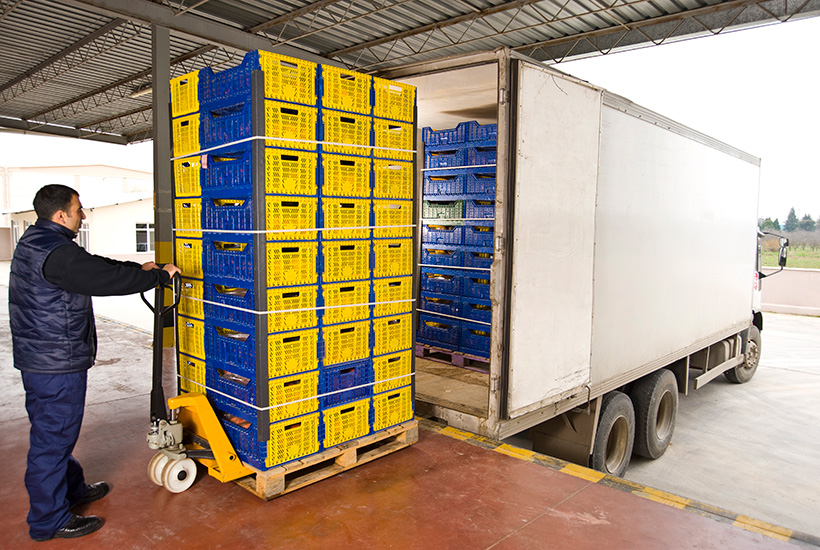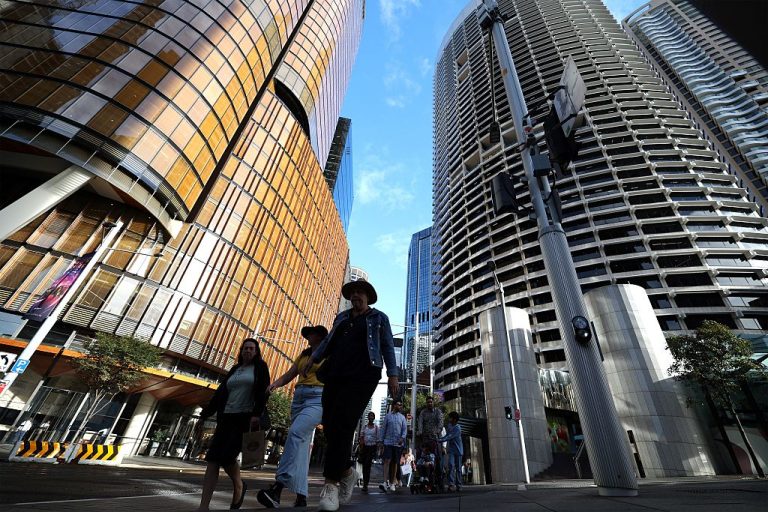What is industrial real estate

Industrial real estate includes factories, warehouses or large buildings used as distribution, manufacturing, assembly, production and storage centres.
These properties are commonly set on large parcels of land on the periphery of capital cities and in close proximity to seaports, airports and major highways, allowing for goods to be easily transported.
One of the three main asset classes of commercial property, industrial real estate includes a large range of business types that come in many shapes and sizes, including mixed-zone buildings featuring offices and similar commercial spaces.
Industry experts explain the ins and outs of industrial assets.
What is the difference between commercial and industrial real estate?

Functionality and efficiency is key to an industrial property’s success and value. Picture: Getty
Retail and office commercial property regularly interact with the general public while industrial real estate doesn’t, with the latter mainly engaging with companies and large enterprises.
Functionality and efficiency is key to an industrial property’s success and value.
“When someone’s choosing an industrial property the main focus is functionality for their business, and they want it to be efficient,” Darren Benson of Knight Frank explained.
An industrial asset’s location should also suit the business and its customers, the national head of industrial logistics said.
“If the property is operating a more labour intensive activity, then it’s important that the location is convenient for staff as well,” Mr Benson said.
What are the different types and sizes of industrial property?
Industrial property as an asset class can be broken down into several different types of properties, with all of them playing an integral role in the supply chain, according to Gordon Code of Colliers.
The industrial sector director explained these categories included facilities for food-grade manufacturing; engineering and fabrication; and transport and third-party logistics (3PL).
Industrial assets can also incorporate pharmaceutical grade and temperature-controlled facilities and automated high-bay warehouses.
The sizes of industrial assets are highly dissimilar as well and are rapidly changing.
“The smallest industrial assets would be mini-storage warehouses while the biggest would be a production or warehousing facility,” Mr Benson said.
“But the sizes of warehouses, in particular, have ballooned out recently and we’re now seeing facilities of up to 100,000sqm under the roof for some of the big distribution outfits.”
Mr Benson said there was a growing number of industrial investors snapping up medium to large-sized assets of 5,000-10,000sqm – with these sizes themselves also increasing.
“About 10 years ago, 2,000sqm-10,000sqm might have been a mid-sized building but now, that’s increased to 5,000-15,000sqm,” he said.
Large distribution centres now comprise about 90% of leasing transactions with last-mile logistics centres accounting for the remaining 10%, Sass J-Baleh at CBRE explained.
The head of industrial and logistics research explained the latter facilities were usually about 2000sqm-5000sqm with distribution centres ranging from 9000sqm-100,000sqm and averaging about 30,000sqm.
“But the average size, compared to last year, has increased by a lot because of the need for more space and there’s a lot more demand,” Ms J-Baleh said.
“This is particularly the case in the outer north-west precinct in Sydney, which is probably one of the most active areas in terms of industrial leasing and development.”
The vacancy rate of Sydney’s industrial land and properties is now just 1.4%, which is the lowest in the country, with leasing activity reaching a record high in 2020, according to CBRE’s Sydney’s Industrial and Logistics Land Supply.
The September 2021 report revealed the city’s total industrial land space now equals 13,067ha.
However, it predicted Sydney will need at least 720,000sqm of additional e-commerce dedicated logistics space to support the growth of internet sales.
What are the benefits of investing in industrial real estate?

Industrial real estate can boast strong COVID resilience. Picture: Getty
One of the strongest reasons to invest in industrial real estate is its incredible COVID-19 tenacity, with the asset class sky-rocketing to success even before the global pandemic hit, thanks to the rapid growth of e-commerce shopping and trade.
There are also plenty of other benefits for industrial investors.
1. COVID resilience
“The industrial property sector has shown great resilience in the face of the challenges presented by the Covid-19 pandemic over the last 18 months,” Mr Code said.
Ms J-Baleh concurred but added that COVID had only been a catalyst for the fact industrial spaces needed to hold more inventory, particularly in the e-commerce retail space.
CBRE’s recent report forecasts $1 billion of e-commerce in the next four years will require an extra 70,000sqm of industrial space by 2025.
“In order to fulfil all those customer needs and demands, they’re going to need to hold more inventory,” she said.
2. Stable, secure returns and low vacancy rates
Along with industrial real estate’s resilience to lockdowns and border closures comes certainty and security, particularly when it comes to future value, according to Mr Code.
“Industrial real estate also currently offers historically low vacancy rates nationally, with significant government spending on infrastructure having a high correlation to industrial property values,” Mr Code said.
Mr Benson said while there was normally a “layover period” between one tenant leaving a property and another arriving, this was no longer the case.
“At the moment, we’ve got tenants with their hand up, hoping to move in as soon as someone comes out of the property,” he said.
“It’s unusual for the market to be so strong like that.”
3. Higher long-term financial gains

Industrial property can offer significant capital growth. Picture: Getty
“Industrialists” or industrial investors can enjoy significant capital growth over several decades, particularly if they buy property in an area that has the potential to change or be gentrified.
“Industrial property has tended to have the lowest initial value throughout the commercial sector so if there is a change of use at some point, it can only really go one direction,” Mr Benson said.
“These are businesses that have owned an industrial property for a very long period of time – 10, 20 or 30 years – and then all of a sudden, they’re sitting on a very large investment value.
“This is the typical outcome for an industrialist.”
What are the risks of investing in industrial real estate?
The risks of investing in industrial property are similar to those involved in most forms of commercial property investment, Mr Code explained.
1. Larger down payments
“There is a higher cost of entry for quality industrial investments,” Mr Code said.
Mr Benson agreed but added that lenders were now more disposed to assist industrial investors.
“Banks are obviously more willing to provide debt now for industrial property because it really is the flavour,” he said.
“But the expectation is that the downpayment will be larger.”
2. Obsolescence
“A lot of occupiers of secondary grade assets require new modern facilities for their new technology and equipment,” Ms J-Baleh said.
“But then there’s also scope there to redevelop those secondary assets.”







